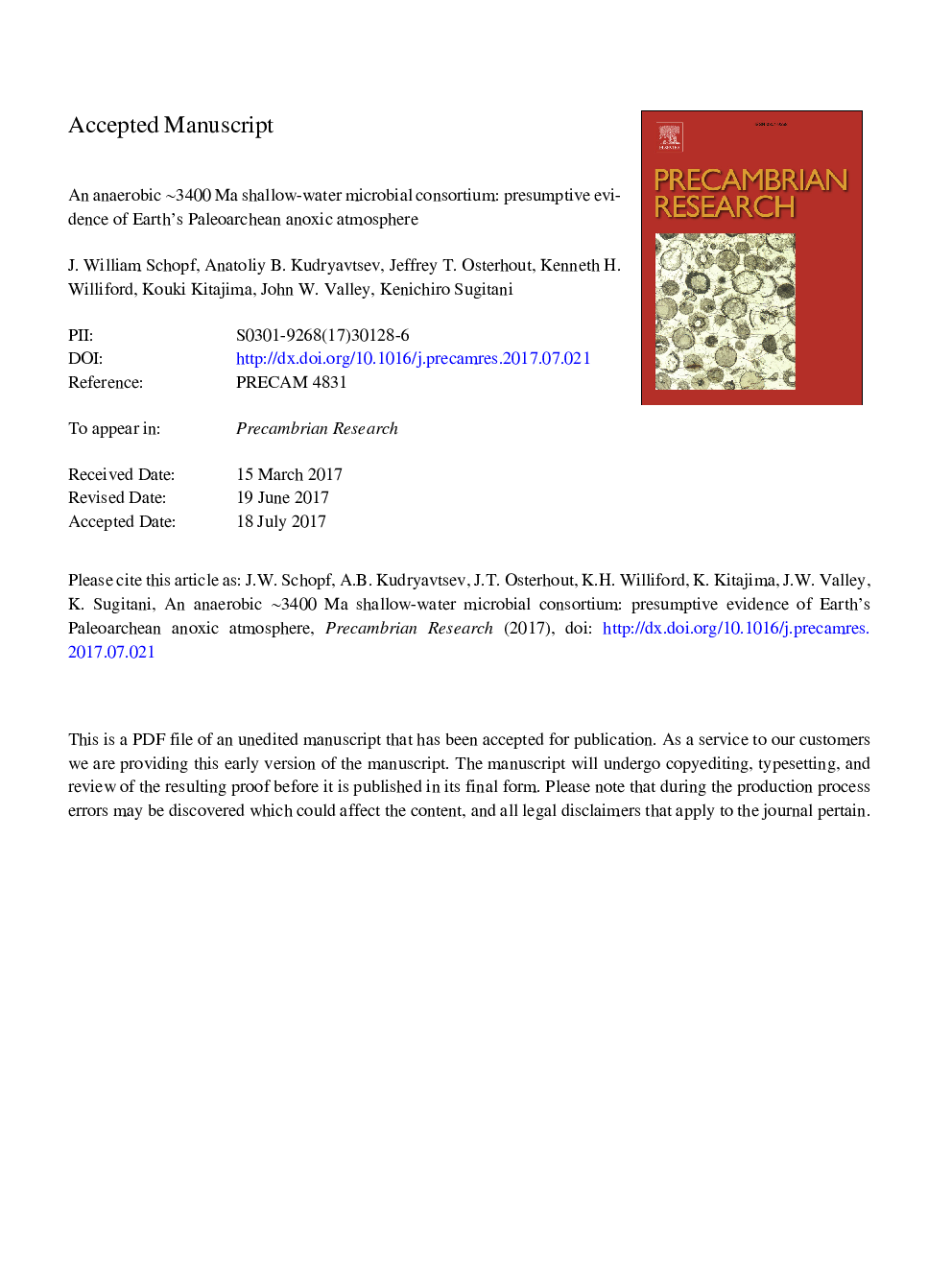| Article ID | Journal | Published Year | Pages | File Type |
|---|---|---|---|---|
| 5784721 | Precambrian Research | 2017 | 49 Pages |
Abstract
By comparison with mid-Precambrian and modern sulfur-cycling ecosystems, and consistent with sulfur isotopic data and their intimate co-existence with copious microgranular pyrite and pseudomorphs evidently after sulfate, the swirled aggregates are interpreted to be anaerobic sulfuretums. In contrast, the intermixed flat-laminated components, like microbes of fossil and modern stromatolitic mat communities, are interpreted to be co-occurring light-requiring phototrophs. Whether such phototrophs were anoxygenic photosynthesizers, like extant photosynthetic bacteria (e.g., chloroflexaleans) or facultatively anaerobic cyanobacteria (cf. Oscillatoria limnetica), their anoxygenic metabolism seems plausibly established. Given its great age, shallow water habitat, and anaerobic/microaerophilic physiology, this evidently first reported occurrence from the fossil record of anoxygenic phototrophs and of a microbial sulfuretum-phototroph consortium is consistent with the supposition that Earth's Paleoarchean environment was essentially anoxic and suggests that O2-producing photosynthesis may have been a later evolutionary innovation.
Related Topics
Physical Sciences and Engineering
Earth and Planetary Sciences
Geochemistry and Petrology
Authors
J. William Schopf, Anatoliy B. Kudryavtsev, Jeffrey T. Osterhout, Kenneth H. Williford, Kouki Kitajima, John W. Valley, Kenichiro Sugitani,
